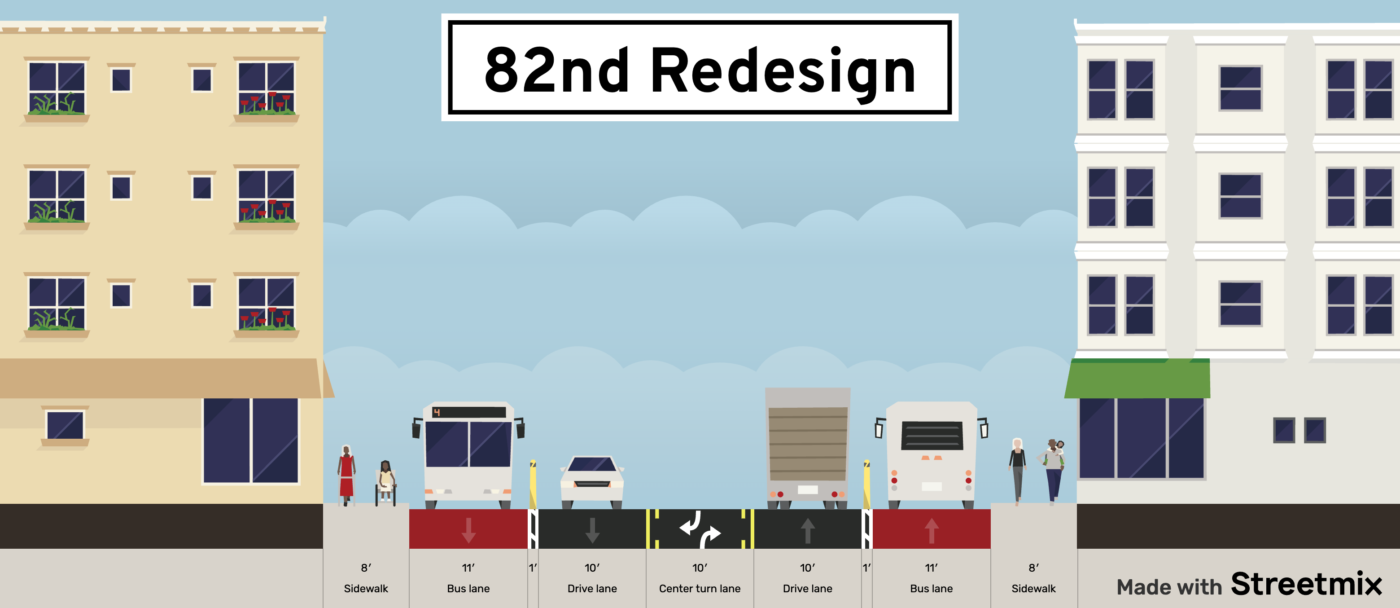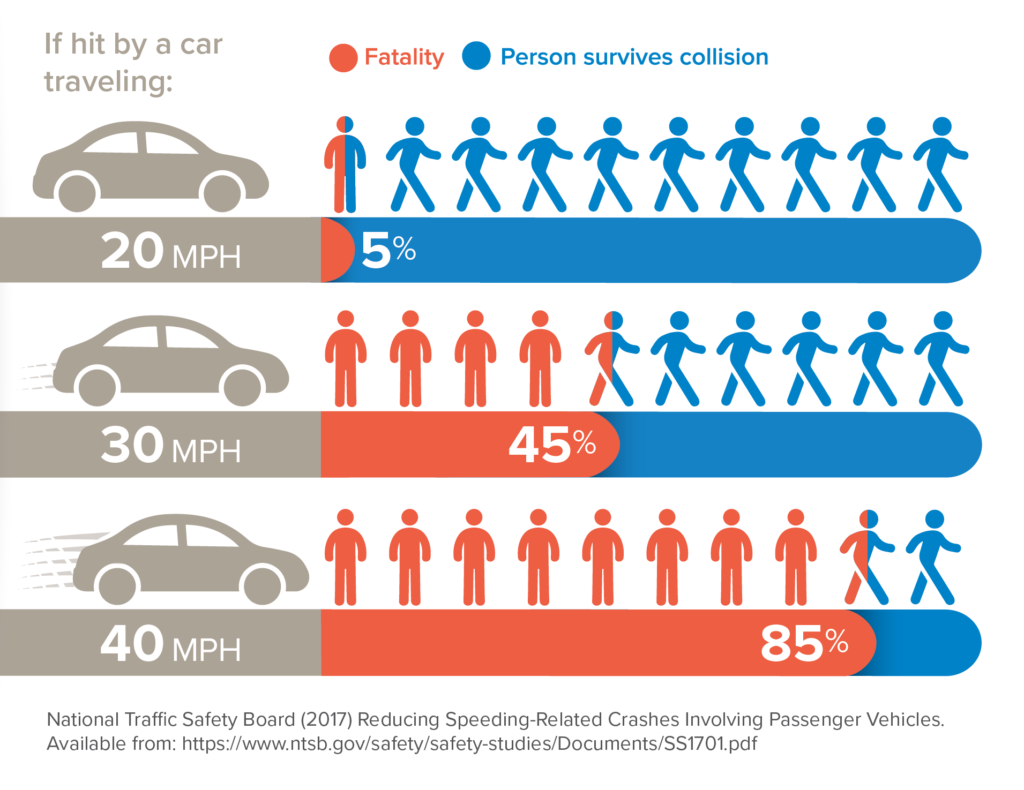 Barriers keep people out of bus lanes. (Photo: Smart Growth America)
Barriers keep people out of bus lanes. (Photo: Smart Growth America)
Garrison Christian is a 20 year old undergraduate student at Portland State University. He is studying Urban Planning, with hopes of becoming a professional transportation planner.
 Garrison Christian at a recent Bike Happy Hour. (Photo: Jonathan Maus/BikePortland)
Garrison Christian at a recent Bike Happy Hour. (Photo: Jonathan Maus/BikePortland)
As most of you already know, 82nd Avenue is going to be redesigned by the Portland Bureau of Transportation (PBOT) in the coming years. This is our chance to make it much better. In this post, I’ll share my ideas for how to achieve a safer, more equitable 82nd.
The street faces many challenges for safe transportation. 82nd is a high crash corridor, with multiple pedestrian deaths over the past 5 years, including one at SE Flavel Monday morning that marked the second one so far this year alone. Sidewalks along the corridor are particularly narrow, often with utility poles blocking the right-of-way. Many sidewalks lack ADA curb ramps, and 82nd is home to TriMet bus line 72, the highest ridership route in the entire Portland metro area.
PBOT is currently implementing ‘critical fixes’ along 82nd; these will be done in the next few years, addressing some, but not all of the concerns listed above. Following this, a comprehensive redesign will be done in the coming years, likely leading to an adjustment of how street space is allocated. The current street is five lanes wide, with one center left turn lane, flanked by two general purpose lanes on each side. In January, I attended Metro’s 82nd Avenue transit project advisory board meeting. This body is tasked with deciding how to best implement transit along the corridor. While bus-only lanes are under consideration, I have concerns with how they will be implemented.

 I created these cross-sections on Streetmix.
I created these cross-sections on Streetmix.PBOT staff said they are likely to choose business access and transit (BAT) lanes for 82nd. While fine in a vacuum, BAT lanes need proper design and enforcement to best serve buses. Here are the changes I would like to see applied: First, bus lanes must be implemented on 82nd! I propose keeping the center turn lane, with one general purpose lane in each direction, and bus lanes against the curb. However, putting in bus lanes alone is not enough to improve bus service. Across town, our limited set of bus lanes are often clogged with cars illegally using the lane, which slows down buses. This is due to poor design and lack of enforcement.
Design measures such as a physical barrier should be used along 82nd to keep cars from driving in the bus lanes. Other cities have used Jersey barriers, concrete curbs, or even flex posts as barriers. An issue to contend with is driveway access for the many businesses along 82nd. The barriers between bus and general purpose lanes can have gaps to allow for turns into driveways. If planners refuse to use physical barriers, automated camera enforcement is another option. Cameras can be deployed to fine those who drive in the bus lane, with an exception given to cars turning to enter/exit the street.
Bus riders deserve to not be inhibited by cars clogging up the bus lane, and well executed design can prevent this conflict.
 Raised crosswalks, like this one in New York City, are key to slowing vehicle speeds and welcoming walkers. (Photo: NYC DOT)
Raised crosswalks, like this one in New York City, are key to slowing vehicle speeds and welcoming walkers. (Photo: NYC DOT) Effects of speed on stopping distance
Effects of speed on stopping distanceAs for pedestrian safety, there are many design treatments we can use to improve 82nd. First off, sidewalks should be made wide, to accommodate foot traffic, as well as those with mobility devices. A minimum standard for sidewalks is six feet, but I propose 8-10 ft sidewalks, which allow for greater separation from traffic, and less crowding. Raised crosswalks are also a great tool to improve pedestrian safety. While having a posted speed limit of 30 mph, the wide lanes of 82nd allow for car speed of 40 mph or faster. Collisions between cars and pedestrians at this speed almost always leads to death of the pedestrian. Raised crosswalks force cars to slow down and this reduced speed gives drivers more time to react, drastically lowering the chances of death if a collision occurs.
The posted speed limit on 82nd should be 25 mph. Measures we can put in place to enforce this behavior through design including 10-foot lanes. 10-foot lanes lead to more cautious driving. By comparison, many streets use 11-13 foot lanes, which have been proven to lead to faster, unsafe speeds. Raised crosswalks are especially useful to prevent vehicles from turning at high rates of speed. A turn taken at 15 mph is much safer than one at 30 — for both the driver and pedestrian.
In conclusion, we have a once-in-a-generation opportunity to change 82nd for the better. We can achieve better safety along the corridor for all road users, reduce our emissions by improving bus service, and create a more hospitable environment for pedestrians. As the public participation process starts for this project, be sure to tell PBOT you want the changes listed above, so we can have a better 82nd, and community at large.
— Garrison Christian, This email address is being protected from spambots. You need JavaScript enabled to view it.

